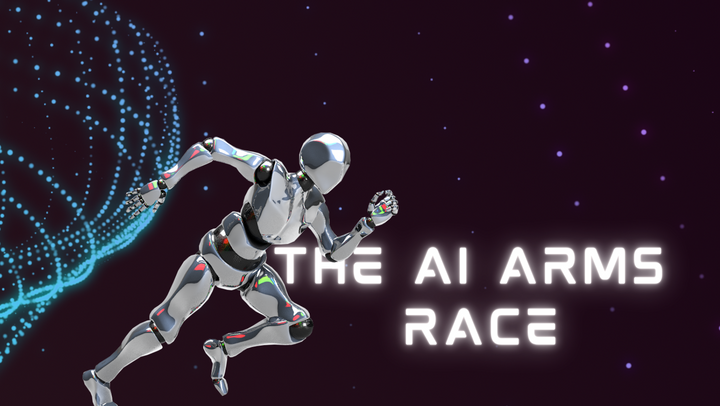The Metaverse - Making virtual reality real

The Metaverse has been a topic of conversation across the tech industry. The phenomenon is said to change the environment of how we use technology and the internet.
The Metaverse is a collision of several digital spaces or universes that create one endless virtual world. It is a place where users can communicate using avatars whilst contributing to a virtual economy in an infinite amount of online stores. As of October 2021, tech giant Mark Zuckerburg announced that his company Facebook would be rebranding and changing their name to Meta leading to Zuckerburg declaring the Metaverse the future of the Internet.
Many other brands have began to get involved in the online world. Fashion brand Tommy Hilfiger held the first fashion show to take place in the Metaverse and American bank, JP Morgan, created the first Metaverse bank. With the involvement of influential brands and companies, it is worth asking the question - will the Metaverse change our lives?
It is easy to say that the Metaverse could simply be exaggerated excitement however, many other companies are getting involved to avoid missing any opportunities. The Metaverse offer digital experiances that are able to offer users additional reality to the physical world. The additions include immersive, virtual, interactive, persistent, interconnected and decentralised experiences that are said to improve upon what can be achieved in the physical world.
This is beginning to become a true reality, especially with the emergence of hardware and software allowing people to fully immerse themselves into the Metaverse.
Companies have began to build products that allow the digital world to appear in high-quality 3D making the Metaverse look almost as real as the physical world. The financial element has also taken off. Blockchain-enabling digital assets have become just as, or more, unique compared to those of the real world. Decentralised Autonomous Organisation has also creation an ecosystem of digital creators who are eager to build and contribute to a real and virtual Metaverse economy.
On top of this, augmented and extended realities are closing the gap between the digital and the physical world. New and innovative devices are creating a bridge between the two worlds allowing users to merge their real and digital experiences. This is also achieved through sensory immersion. This is created through devices that allow the users to interact freely and accurately with a digital world and feel as if their actions are represented similarly to their physical actions/movements.
Many experts have claimed that the Metaverse will not work if it is viewed as a place of escapism. The Metaverse and its partnering hardware will need to be a positive addition to what already exists. Devices will need to be discreet, efficient and easily integrated into users lives. For example, the release of the Apple Watch made many sceptical. We saw half the population running to get their hands on one of the smart watches whilst the other half looked at the devices as a gimmick and a toy. Now the Apple Watch stands as the most used smart watch in the world. This same pattern would need to apply to any device used to connect to the Metaverse.
The release of devices such as Oculas, a virtual reality (VR) headset with controllers, saw many become involved in VR gaming. Since its release, the only real use has been for gaming. Technologies are still limited when it comes to immersion into the Metaverse. The digital world will have to become a worthwhile medium that gives audiences and users a reason to use it. The most recent example of this is the adoption of TikTok. Within five years, the application reached one billion users - the fastest social media to do so. When we compare this to the adoption of other innovative technologies it is extremely fast.
The last ten years has seen the implementation of new technologies increase rapidly compared to history. For example, the mass adoption of the landline telephone rose steadily, but flatly, over the course of 100 years where the use of a smartphone increase exponentially over 10 years. It is likely that, if executed correctly, the Metaverse will have the same affect.
Many people wish to feel a part of something, especially commercially. The Metaverse and the companies creating technology for it can harness this and create products that allow users to be part of an audience. A brand that has achieved this perfectly is Apple. The company has created an ecosystem of products and services that allows users to be part of a community of Apple users. Apple's products such as watches, headphones, TV hubs, computers and phones all work together seamlessly and create an interconnected experience for users to the point where it is almost impossible to escape. The same model will need to apply to the Metaverse. For it to work, people need to dedicated and involved.
Although there are bound to be several challenges that come with the mass implementation of the Metaverse, it can be said with confidence that society will welcome the new world and technology much like they did with artificial intelligence and smartphones.
For more information on Tej Kohli as a philanthropist visit tejkohliruit.com and to read more of his views go to his Medium.
To read about Tej Kohli as an investor visit Kohli Ventures.
Find out more about Tej Kohli: Tej Kohli the technologist investing in human triumph, Tej Kohli the philanthropist trying to cure the developing world of cataracts and Tej Kohli the London tycoon with a generous streak.
| Follow: Twitter | Instagram | LinkedIn | Facebook | YouTube |




Comments ()